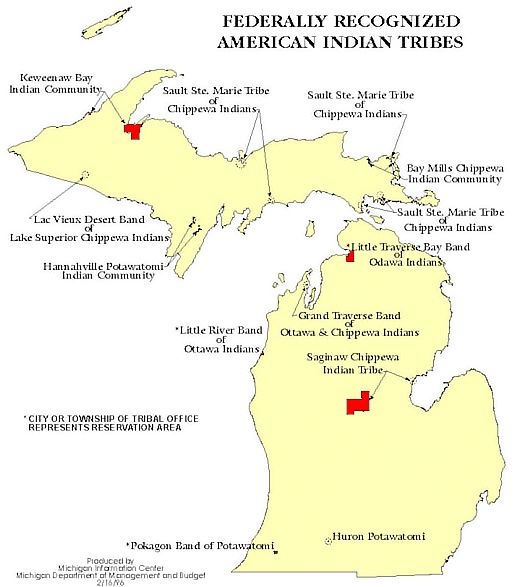Unveiling Michigan’s Hidden Treasures: A Guide to Indian Reservations and Table Rock Lake
Unveiling Michigan’s Hidden Treasures: A Guide to Indian Reservations and Table Rock Lake

The Great Lakes State, Michigan, is known for its stunning natural beauty, vibrant cities, and rich history. But tucked away within its borders lie hidden treasures – the sovereign lands of Native American tribes. These reservations, each with its unique culture and traditions, offer a glimpse into the rich tapestry of Michigan’s past and present.
This article will delve into the fascinating world of Michigan’s Indian reservations, providing an overview of their location, history, and cultural significance. We’ll also take a detour to explore the scenic beauty of Table Rock Lake, a popular destination for outdoor enthusiasts.
Related Articles: Unveiling Michigan’s Hidden Treasures: A Guide to Indian Reservations and Table Rock Lake
- Uncover Arizona's Native American Heritage: A Journey into the Past and Present
- Uncover the Enchanting World of the "indian reservation near taos, new mexico"
- Uncover the Enigmatic World of the Largest Indian Reservation in the US
- Discover the Hidden Gems of Native Reservations in Texas
- Discover the Native American Tribe of Laredo, Texas: Unraveling Ancient Histories
Navigating Michigan’s Indian Reservations: A Map of Heritage
Michigan is home to 12 federally recognized tribes, each with its own reservation. These reservations are scattered across the state, from the Upper Peninsula’s rugged forests to the Lower Peninsula’s fertile farmlands.
Here’s a glimpse at some of the prominent reservations in Michigan:
- Sault Ste. Marie Tribe of Chippewa Indians: Located in the eastern Upper Peninsula, this tribe boasts a rich history and vibrant culture. Their reservation is known for its stunning natural beauty, including the majestic St. Marys River.
- Bay Mills Indian Community: Situated in the Upper Peninsula, near the shores of Lake Superior, this tribe is renowned for its strong community spirit and dedication to preserving their traditional ways.
- Keweenaw Bay Indian Community: This reservation, located on the Keweenaw Peninsula, is known for its breathtaking scenery and rich copper mining heritage.
- Little Traverse Bay Bands of Odawa Indians: Located in the northern Lower Peninsula, this tribe’s reservation is a cultural hub, with strong ties to the land and its natural resources.
- Nottawaseppi Huron Band of Potawatomi Indians: This tribe’s reservation is located in the southern Lower Peninsula, near the city of Kalamazoo. They are known for their strong community and commitment to education.
- Saginaw Chippewa Indian Tribe: With three reservations located in the central Lower Peninsula, this tribe is a major force in economic development and cultural preservation.

Beyond the Reservations: Exploring Table Rock Lake
While Michigan’s Indian reservations offer a unique cultural experience, the state is also home to numerous natural wonders. Table Rock Lake, a sprawling reservoir in the Ozark Mountains of Missouri, is a popular destination for outdoor enthusiasts.

Here’s why Table Rock Lake is a must-visit:
- Stunning Scenery: The lake’s crystal-clear waters reflect the surrounding mountains, creating breathtaking views that are sure to leave you in awe.
- Water Sports Paradise: Whether you’re a seasoned boater or a novice kayaker, Table Rock Lake offers something for everyone.
- Fishing Frenzy: Anglers flock to the lake’s abundant waters, hoping to reel in bass, crappie, catfish, and more.
- Hiking and Biking Trails: Explore the surrounding forests and hills on scenic hiking and biking trails, offering breathtaking vistas and a chance to connect with nature.
- Camping and Glamping: From rustic campsites to luxurious glamping options, Table Rock Lake offers a variety of accommodations to suit every traveler’s needs.

A Deeper Dive into Michigan’s Tribal History
Michigan’s Indian reservations are not just geographical locations; they are living testaments to the resilience and cultural richness of Native American tribes. Each tribe has a unique history, marked by both hardship and triumph.
Here’s a glimpse into the historical tapestry of Michigan’s tribes:
- The Anishinaabe (Ojibwe, Odawa, and Potawatomi): These three tribes have inhabited the Great Lakes region for centuries, playing a vital role in shaping the region’s history and culture.
- The Huron (Wyandot): This tribe, originally from the Great Lakes region, has a long and complex history, marked by both conflict and cooperation with other tribes.
- The Menominee: This tribe, known for their traditional crafts and fishing skills, has a strong connection to the land and its resources.
Understanding the Importance of Tribal Sovereignty
It’s crucial to understand that Michigan’s Indian reservations are not simply "reservations" but sovereign nations, with their own governments, laws, and cultural practices.
Here’s why tribal sovereignty is essential:
- Self-determination: Tribal sovereignty allows tribes to govern themselves, making decisions that reflect their unique needs and values.
- Cultural Preservation: It provides tribes with the autonomy to protect and preserve their traditions, languages, and cultural heritage.
- Economic Development: Tribal sovereignty enables tribes to pursue economic opportunities that benefit their communities.
Embracing Cultural Exchange and Understanding
Visiting Michigan’s Indian reservations offers a unique opportunity to learn about the rich history and culture of Native American tribes.
Here are some tips for respectful and meaningful interactions:
- Respect Tribal Boundaries: Be mindful of tribal boundaries and regulations, and always obtain permission before entering reservation lands.
- Learn about Tribal History: Take the time to learn about the history and culture of the tribe you’re visiting.
- Support Tribal Businesses: Patronize tribal-owned businesses, helping to support the local economy and cultural preservation efforts.
- Engage in Dialogue: Engage in respectful conversations with tribal members, learning from their experiences and perspectives.
FAQ: Unveiling the Mysteries of Michigan’s Reservations
Q: Are Michigan’s Indian reservations open to the public?
A: Most reservations welcome visitors, but it’s always best to check with the tribe directly for specific guidelines and regulations.
Q: What are some popular attractions on Michigan’s Indian reservations?
A: Many reservations offer cultural centers, museums, art galleries, casinos, and unique shopping experiences.
Q: How can I learn more about Michigan’s Indian reservations?
A: You can visit tribal websites, attend cultural events, or contact the Michigan Indian Affairs Commission for information and resources.
Q: Are there any opportunities to volunteer or contribute to tribal communities?
A: Many tribes welcome volunteers and offer opportunities to contribute to their education, healthcare, or cultural preservation efforts.
Q: What is the best way to travel to Table Rock Lake?
A: Table Rock Lake is easily accessible by car, with major highways leading to the area.
Q: What are the best times to visit Table Rock Lake?
A: The best time to visit Table Rock Lake is during the spring, summer, and fall, when the weather is mild and the lake is perfect for water activities.
Q: What are some popular activities to do at Table Rock Lake?
A: Popular activities include boating, fishing, swimming, hiking, camping, and exploring the surrounding Ozark Mountains.
Conclusion: A Journey of Discovery and Respect
Exploring Michigan’s Indian reservations and Table Rock Lake is an enriching journey that combines cultural immersion, natural beauty, and outdoor adventure.
As you embark on this journey, remember to approach it with respect, curiosity, and a willingness to learn. By embracing the opportunity to understand and appreciate the rich history and culture of Native American tribes, you can contribute to a more inclusive and understanding world.

Closure
Thus, we hope this article has provided valuable insights into Unveiling Michigan’s Hidden Treasures: A Guide to Indian Reservations and Table Rock Lake. We thank you for taking the time to read this article. See you in our next article!